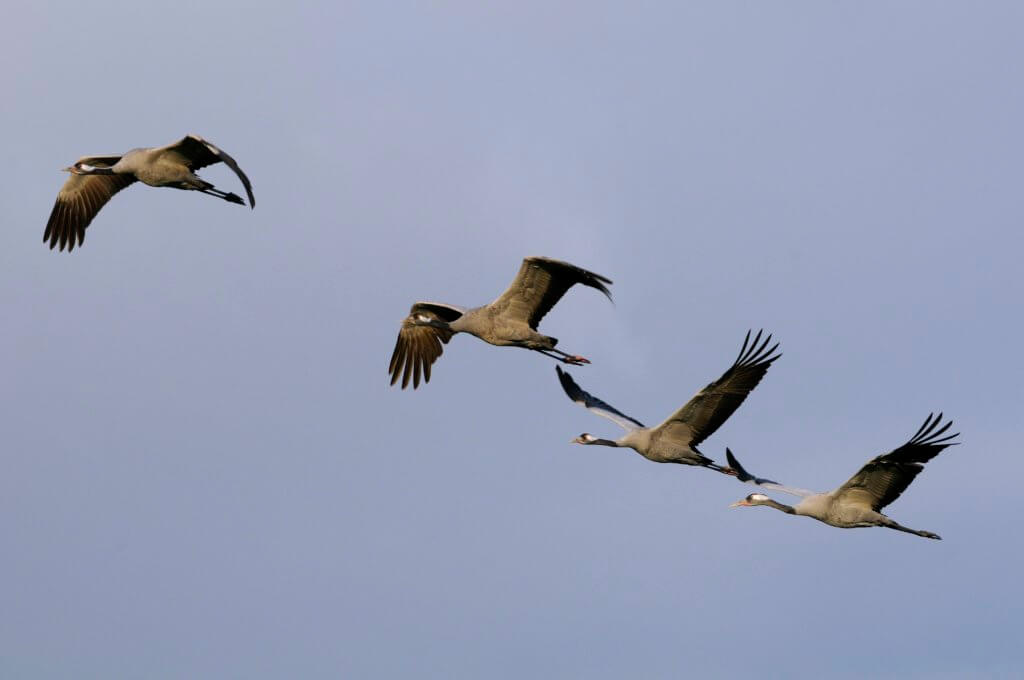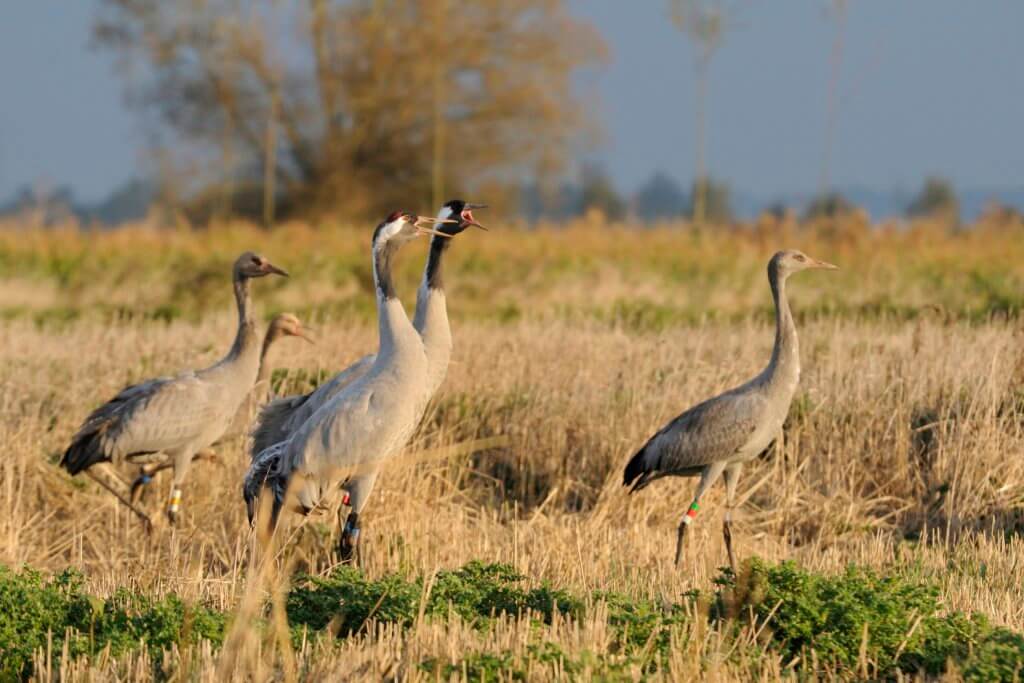
Common Cranes. Photo: Nick Upton/RSPB images
Survey reveals record number of UK’s tallest bird
Figures released reveal 2018 has been the most successful year for Britain’s tallest bird – the common crane – since the 17th Century.
A record 54 pairs produced 25 chicks, bringing the national total population to around 180 birds.
Common cranes now breed in England, Scotland and Wales, with most of the population found in the Norfolk Broads, East Anglian Fens, Somerset Levels and Gloucestershire.
The common crane has continued to make a comeback after the latest survey revealed a record breaking 54 pairs across the UK in 2018, with the total population now believed to be more than 180 birds. This is its highest number since cranes returned to the UK in 1979 after an absence of more than 400 years.Standing at a height of 120cm, this stunning bird is the tallest in the UK. Wild cranes were once a widespread breeding species before they became extinct through hunting and the loss of their wetland habitat around the 1600s.
In 1979, a small number of wild cranes returned to the UK and established themselves in an area of the Norfolk Broads. Thanks to the dedication of individuals, the UK Crane Working Group and conservation organisations, cranes slowly spread to other areas of eastern England. These birds have benefitted from work to improve their habitats at the RSPB’s Lakenheath, Nene Washes reserves and Natural England’s Humberhead Peatlands.
In 2010, the Great Crane Project – a partnership between the RSPB, WWT and the Pensthorpe Conservation Trust funded by Viridor Credits Environmental Company – set out to help this small population of birds. By creating and improving existing habitat and carefully hand-rearing young birds, the project aimed to restore healthy numbers of wild cranes throughout the UK by releasing them on the Somerset Levels and Moors.
The latest crane survey has now revealed 54 pairs across the UK in 2018. Of these, up to 46 pairs attempted to breed and they fledged 25 chicks. Since 2000, an incredible 160 chicks have been raised, significantly adding to the UK population. Wild cranes are now breeding in the Norfolk Broads, East Anglian Fens, Yorkshire and East Scotland, as well as populations in South-west England.
Damon Bridge, Chair of the UK Crane Working Group said, ‘Cranes were once found throughout the UK, but disappeared from Britain over 400 years ago because of hunting for food, and the draining of their wetland breeding areas.To see them starting to spread back across the country after all this time is just brilliant – and a true reflection of how important the UK’s wetland habitats are to cranes as well as the many other species they support.‘.
Andrew Stanbury, RSPB Conservation scientist said, ‘This success story highlights the importance of the UK’s protected sites and nature reserves. RSPB sites alone hold 30% of the UK breeding population. These special places offer the seclusion necessary for cranes to breed successfully. For this expansion to continue we need to better protect existing sites and look to creating and maintaining others.‘.Baz Hughes, WWT’s Head of Conservation Action said, ‘As part of the Great Crane Project, we reared 93 young cranes in purpose-built facilities at WWT Slimbridge and released them at the Somerset Levels and Moors over five years. The cranes adapted to life in the wild more successfully that anyone predicted and by the end of 2018, we have had nearly 60 nesting attempts events from which 18 chicks have successfully fledged, effectively doubling the UK population.‘.
Chrissie Kelley, Head of Species Management at Pensthorpe Conservation Trust, said, ‘As partners in the Great Crane Project, and with a long association working with Eurasian Cranes, we are thrilled by these breeding figures. Seeing these birds in flight is breath-taking and one of our highlights this year was a flock of 15 wild cranes flying over the reserve. We hope soon to spot one of the released birds among those that visit Pensthorpe.‘.
Ends

Common Cranes. Photo: Nick Upton/RSPB images
Proud to have played a small part in promoting this project. Great news!